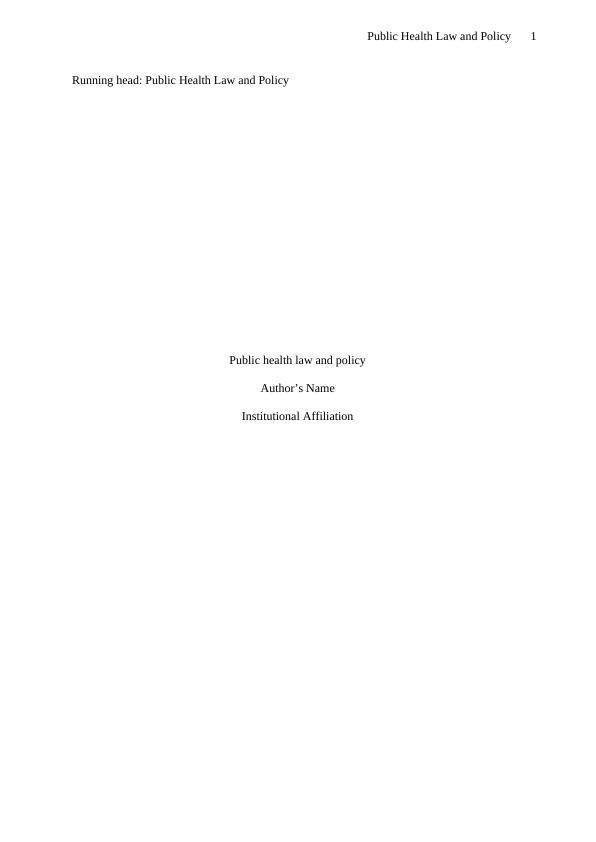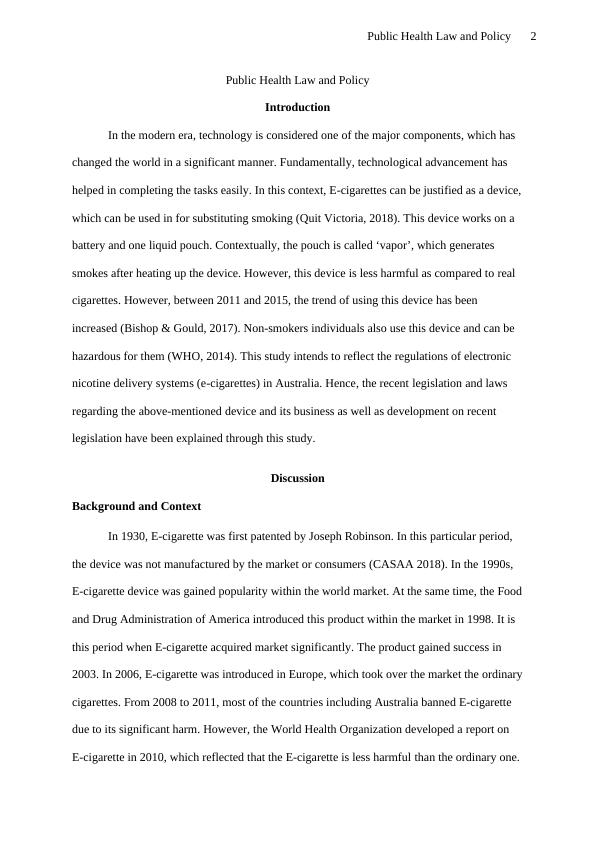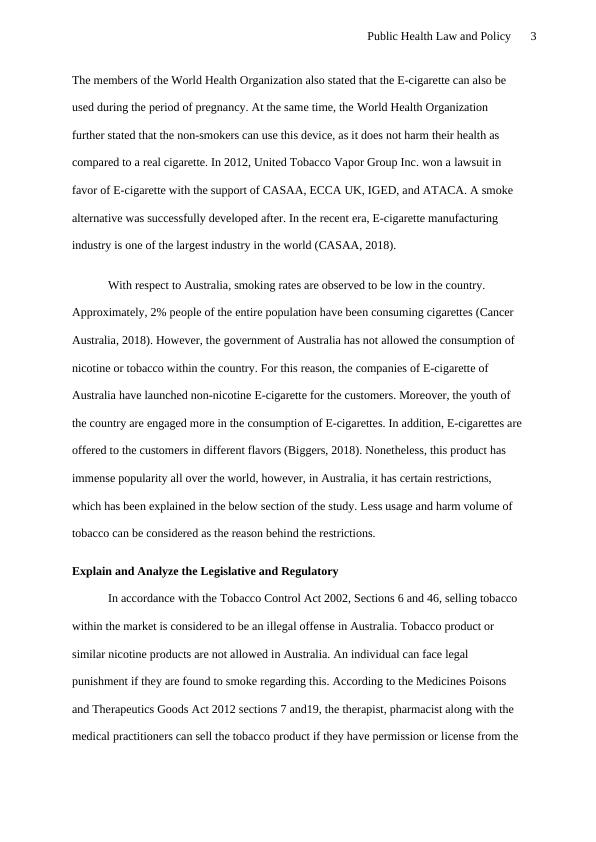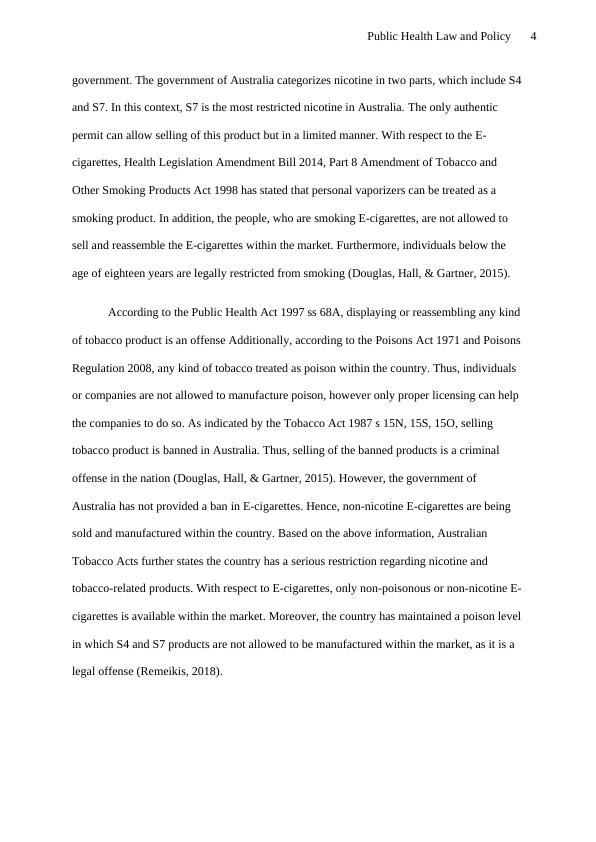Regulations of Electronic Nicotine Delivery Systems in Australia
Write a case study in report format addressing the legislative and regulatory requirements of a contemporary public health issue, specifically discussing the merits and disadvantages of voluntary industry self-regulation as an approach to providing health warnings for consumers on alcohol containers.
13 Pages3737 Words419 Views
Added on 2023-06-03
About This Document
This study reflects the regulations of electronic nicotine delivery systems (e-cigarettes) in Australia. The recent legislation and laws regarding the above-mentioned device and its business as well as development on recent legislation have been explained through this study. The study also analyzes the legislative and regulatory context of changes and improvements to public health outcomes.
Regulations of Electronic Nicotine Delivery Systems in Australia
Write a case study in report format addressing the legislative and regulatory requirements of a contemporary public health issue, specifically discussing the merits and disadvantages of voluntary industry self-regulation as an approach to providing health warnings for consumers on alcohol containers.
Added on 2023-06-03
ShareRelated Documents
End of preview
Want to access all the pages? Upload your documents or become a member.
Australian Law for Tobacco Control
|5
|1593
|24
Environmental Impact Assessment Scoping | EIA Scoping Report
|3
|383
|168
Australian Law for Tobacco Control Essay 2022
|7
|1876
|17
Public Health Law and Policy
|6
|1067
|438
How to Lower Smoking Related Deaths
|8
|2569
|1
Effective Writing Skills: Truth About E-Cigarettes and Post Traumatic Stress Disorder
|6
|1003
|117




